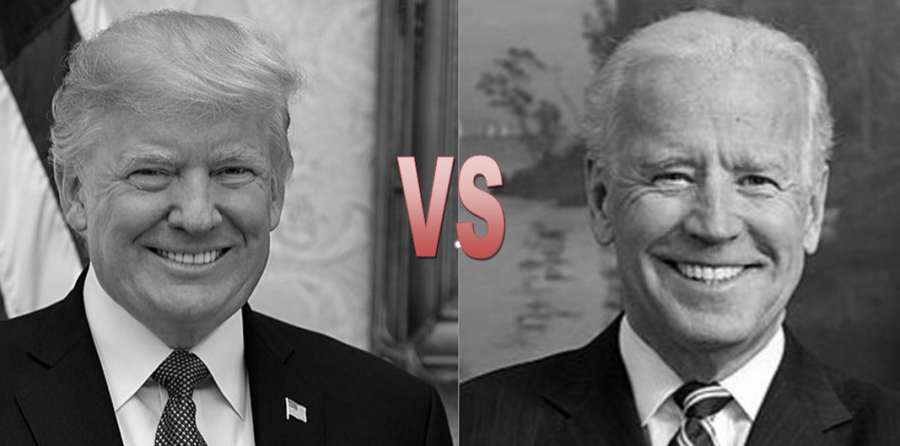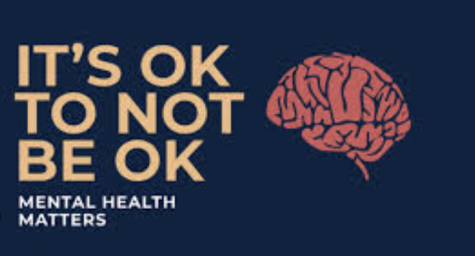THE FINAL BID FOR THE 2020 ELECTION: TRUMP VS. BIDEN
Modified, contributed by: https://www.flickr.com/photos/186268116@N04/49305591216/
As November elections come closer, citizens begin to weigh their options when looking at the Democratic and Republican candidates on the ballot.
May 6, 2020
After careful consideration, Bernie Sanders pulled out of the Democratic race earlier this month, essentially securing the democratic nominee as Joe Biden (Tulsi Gabbard is still running a campaign; however, she remains polling at 1 percent). Sanders, with a significantly left-leaning agenda, was favored by the youth population. Biden, who holds a more centrist appeal, has margins relatively throughout the age groups.
After Sanders’ withdrawal, he, along with past nominees including Kamala Harris and Beto O’rourke, endorsed former Vice President Biden.
Biden seemingly has an edge over President Donald Trump on the National Polling Averages along with every one-on-one poll, noted by Forbes. On Monday, the University of North Florida conducted a poll where they asked respondents about a potential matchup for the upcoming presidential election. 46 percent indicated a preference for Biden and 40 percent selected Trump as their preferred candidate.
Being a Democrat, Biden’s political agenda is significantly different than Trump’s. His platform includes many topics such as the expansion of Obamacare, an affordable healthcare plan instituted under Obama’s presidency. Major changes have been made during Trump’s term pertaining to women’s reproductive rights. With this in mind, Biden wants to codify Roe v. Wade, repeal the Hyde Amendment, and restore federal funding for Planned Parenthood (through Medicaid and Title X). Moreover, Biden also wants to “modernize America’s immigration system by reasserting “America’s commitment to asylum-seekers and refugees, tackl[ing] the root causes of irregular migration, and by implement[ing] effective border screening. While these remain big issues, Biden aims to tackle our current climate crisis with a plan for a clean energy revolution and environmental justice. To read more about Biden’s campaign, click here.
“[Biden] definitely was not my first choice; however, with his past experience working in the White House, I think he is more suitable to act as our commander-in-chief. I like his plans regarding DACA, gun reform, and the Affordable Care Act,” explained an anonymous student.
Trump’s conservative following differs in their views. In his first term, he renegotiated NAFTA, left the TPP, and brought the unemployment rate to an all-time low (however, in the current COVID-19 crisis, this does not apply for obvious reasons). Unlike Biden’s praise for Obamacare, Trump repealed this mandate. Furthermore, he enforced major immigration laws. For more information about Trump’s campaign, click here.
“In the upcoming election, I support Donald Trump because he is pro-life and values the sanctity of the pre-born child. I know Trump isn’t very popular with younger crowds, but I do my research and this is what I think is best. He has done good things as President and I don’t agree with him on everything, but I think he is the best of our two candidates,” explained another anonymous student.
With the upper hand in many situations, President Trump has the incumbency advantage. On top of this, he also is notorious for winning the electoral college. (The electoral college consists of a total vote based on a percentage per state and the popular vote is the overall tally of voters. The election count is currently determined by the electoral college). Trump, a far-right politician, has secured votes in many red states including Alabama, Kansas, and Oklahoma. These key states play a critical role in determining Trump’s success or downfall. Biden’s voters are more dispersed throughout the nation, which may pose as a major disadvantage to his campaign. The electoral college remains widely disputed. The dislike typically resonates with Democratic voters. Most feel that it does not accurately account for every vote.
“I am not a big fan of the electoral college. I know a lot of people who feel the same way. I don’t really understand why it has even been used for so long. Also, it is based on a racist system,” explained an anonymous student.
On the other hand, most Republicans disagree as the electoral college brings a huge advantage for the GOP.
“I think the electoral college is a more accurate measure. We have really populated states like NY and CA that take up so much of the vote. Most of these urban areas are liberal and they skew from the other densely populated states,” voiced another anonymous student.
It will be a matter of time before campaigning intensifies. In order for Biden or Trump to win, they must fight to win battleground states such as Florida and Pennsylvania. These are the states that have a cluster of registered Republicans, Democrats, and Independents. In some elections, these states fall red. Other times, they fall blue. Florida, in particular, has a pivotal part in elections. Because of its semi-large population, it carries 29 electoral votes and often determines the fate of the election. For instance, during the 2016 election, Florida fell red, eventually leading to Hilary Clinton’s defeat. Currently, Biden has popular appraise in Florida, leading by six points. The future of this, however, remains uncertain.
The outbreak of COVID-19 also poses a determining factor. The same poll by UNF also showcased a decrease in Trump’s approval ratings due to his handling of this situation. Currently, 53 percent of surveyees indicated that they disagreed with his response.
While the future of this nation may seem uncertain, it is important to stay up to date with news to make sure you are voting on your best judgment. To register to vote, click here. To learn more about the upcoming election cycle, click here. For more information about COVID-19, click here.



































